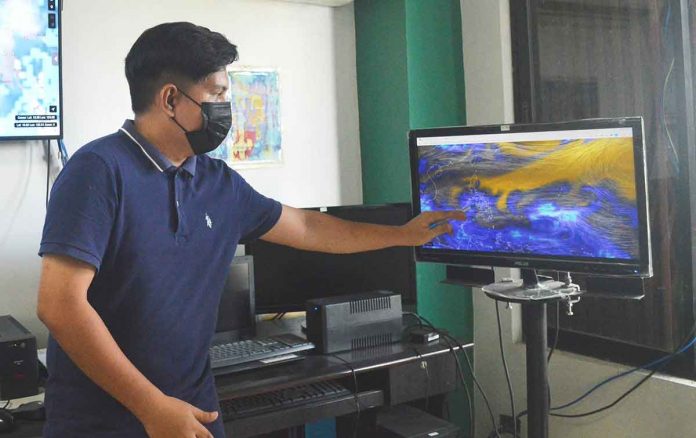
ILOILO City – Get ready not only for the rains but also for the inconveniences and hazards they bring such as flooding and landslides.
The Philippine Atmospheric, Geophysical and Astronomical Services Administration (Pagasa) has officially declared the start of the rainy season.
“Dapat may ara kita proteksyon sa pag ulan-ulan nga ini kaangay sang pagdala sang payong. Kis-a kusog ang pag-ulan, dapat may ara kita awareness sa mga possible hazards ukon peligro nga dala sini,” according to Pagasa-Iloilo weather specialist Ferdinand Rubin.
In a statement, Pagasa said intermittent rains associated with the southwest monsoon or habagat will begin to affect the western section of the country.
But monsoon breaks (or breaks in rainfall events) are still likely and could last for days or weeks, it added.
“Diri sa aton sa Western Visayas, ari kita sa western part sang country, mas madamo ang aton pag-ulan nga mabatyagan,” warned Rubin.
Continuous and heavy rainfall may cause flooding and landslides particularly in geohazard areas.
According to Pagasa, the presence of the frontal system, and the occurrence of severe thunderstorms have brought widespread rains in the last five days in areas under Type I climate and other parts of the country.
A province is considered to have a Type I climate if there is a distinct dry and a wet season; wet from June to November and dry, the rest of the year.
“The southwesterly windflow was also observed in the past few days. This satisfies the criteria of the start of the rainy season over the western sections of Luzon and (the) Visayas,” a statement from Pagasa read.
Rubin said the existing La Niña phenomenon may increase the likelihood of above normal rainfall conditions in the coming months in some parts of the country.
During the rainy season, people could expect rains most likely in the afternoon and evening.
GEOHAZARD
In a related development, the updating of the Mines and Geosciences Bureau’s (MGB) Region 6 geohazard map has been recommended to include areas and places that experienced flooding and landslide during the Tropical Depression “Agaton” in April.
“Some of the landslides were new so one of the recommendations was to update the geohazard map,” said Cindy Ferrer, information officer of the Office of Civil Defense and at the same time spokesperson of the Regional Disaster Risk Reduction and Management Council (RDRRMC).
Ferrer, citing an RDRRMC situation report, said 73 rain-induced landslides were monitored during “Agaton”: 18 from Capiz, 24 from Iloilo province, 23 from Antique, seven from Negros Occidental, and one in Aklan.
Some 388 barangays all over the region were flooded.
“Some of the incidents used to be minimal but the hazard became risky during ‘Agaton’,” she added.
Aside from updating the geohazard map, the relocation of residents staying in critical geohazard zones and the prohibition of the construction of houses, schools, and important infrastructures in the landslide- and flood-prone areas was also recommended. (With a report from the Philippine News Agency/PN)





